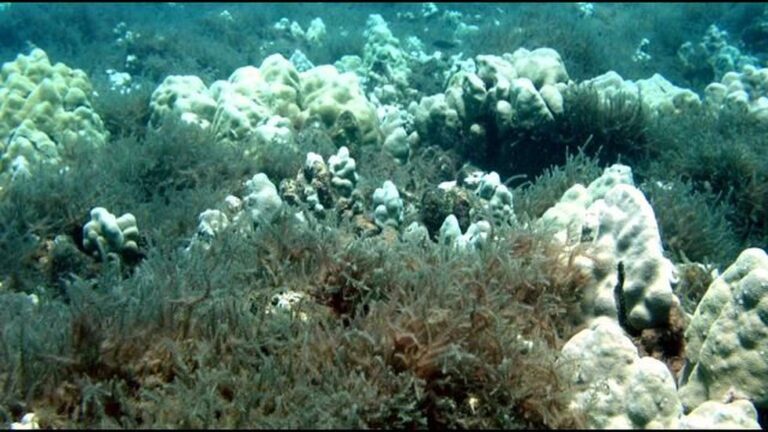eNews Park Forest | April 17, 2012
Lahaina injection wells foul Kahekili Beach Park, killing coral and triggering algal blooms
Honolulu, HI–(ENEWSPF)–April 17, 2012.
Four Hawaiʻi community groups filed suit yesterday under the federal Clean Water Act to stop Maui County from discharging wastewater into the ocean from its Lahaina treatment plant without a permit. Millions of gallons of wastewater injected into wells at the facility each day surface offshore of popular Kahekili Beach Park in West Maui, killing the coral reef and triggering outbreaks of invasive algae.
Earthjustice filed the complaint in federal district court on behalf of Hawaiʻi Wildlife Fund, the Surfrider Foundation, West Maui Preservation Association, and Sierra Club-Maui Group. The action follows years of unsuccessful efforts to resolve the issue out of court.
“We notified Maui County last June that its Lahaina facility was damaging the reef and operating illegally, in hope that the County would voluntarily seek the required permit for wastewater discharges from the injection wells,” said Earthjustice attorney Caroline Ishida. “Unfortunately, it apparently takes an enforcement action to get the County to do anything, which is why we’re now seeking relief from the court.”
Maui County has been discharging partially-treated sewage into injection wells at the Lahaina wastewater treatment plant for 30 years, knowing full well that the wastewater would eventually reach the ocean, but has refused to apply for, much less comply with, the required federal wastewater discharge permit. Currently, three to five million gallons of wastewater are discharged into the wells each day.
The complaint filed by the groups today asks the court to direct Maui County to secure a National Pollutant Discharge Elimination System permit, which would set limits on the pollutants that can be discharged from the wells.
In addition to pollutants like nitrogen and phosphorous, the wastewater contains bacteria and other pathogens, in violation of the federal Safe Drinking Water Act. In September 2011, the Environmental Protection Agency required the County to disinfect all of the wastewater pumped into the injection wells at the Lahaina facility by the end of 2013. The County’s failure to adequately disinfect the water over the past several years has been linked to staph infections among swimmers and other users of Kahekili Beach Park.
“While disinfection is a step in the right direction, it won’t remove nitrogen and phosphorous from the wastewater, so it won’t get rid of the harmful algae growth at Kahekili,” said Hannah Bernard of Hawaiʻi Wildlife Fund. “Algae smother the coral and upset the ecosystem because fish and other marine animals depend on the reef for food and need the crevices within the reef for shelter.”
Researchers from the University of Hawaiʻi (UH) analyzed the specific type of nitrogen found in the algae growing in the waters offshore of Kahekili Beach and were able to positively identify it as the same type of nitrogen being pumped into the injection wells.
An ongoing tracer dye study conducted by the EPA and UH scientists has further confirmed the connection between the wells and the ocean, showing that pollutants injected into the wells make their way into the nearshore waters of Kahekili Beach Park via freshwater seeps.
“Algae growth and infectious diseases aren’t the only problems the injection wells cause,” explained Tim Lara, Chair of Surfrider Foundation-Maui Chapter. “Studies have shown that chemicals like pharmaceuticals and fire retardants also travel from the injection wells into nearshore waters, posing additional threats to the delicate ecosystem and to local residents and tourists swimming and surfing at Kahekili Beach.”
“The Lahaina wastewater facility must cease using the public nearshore waters to dispose of its waste,” said Lance D. Collins of West Maui Preservation Association. “In the face of the scientific evidence, continuing to pretend the injected effluent magically disappears is no longer acceptable.”
“The algal growth and damage to the reefs have a major, negative impact on the West Maui economy,” said Earthjustice attorney Caroline Ishida. “People check out of hotels early and avoid the beach when there are algal blooms, costing Maui’s businesses millions of dollars in lost tourism revenue.”
“The County should be treating and re-using the millions of gallons of wastewater for irrigation at resorts, golf courses and other areas of West Maui, not dumping it onto the reef,” commented Chris Taylor of Sierra Club-Maui Group. “Reusing the water would not only save the reef, but also address West Maui’s increasingly severe water shortages.”
Source: earthjustice.org
Original Post: https://www.enewspf.com/science/environmental/community-groups-sue-maui-county-to-stop-illegal-sewage-discharges/

